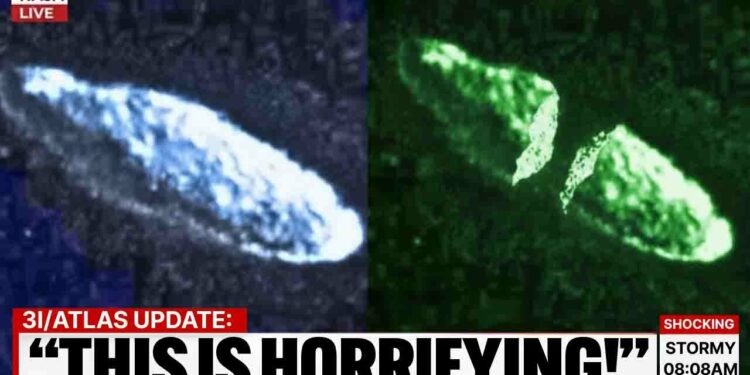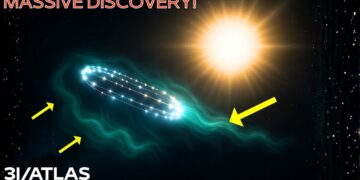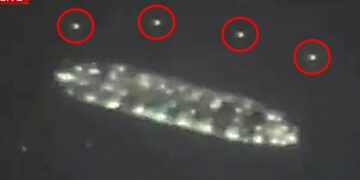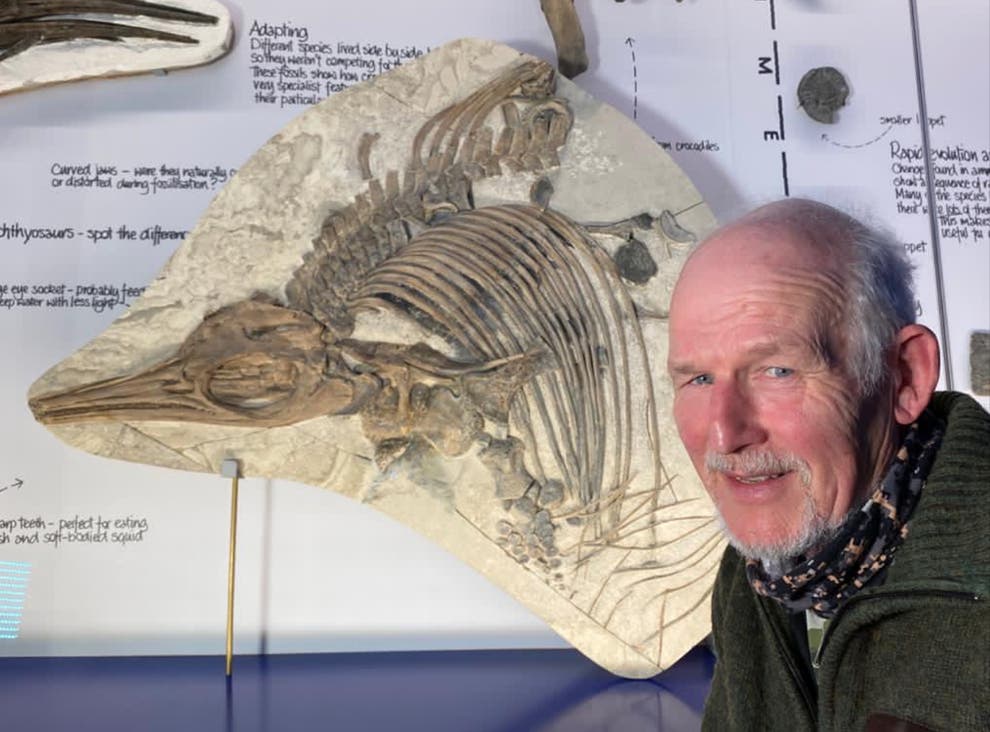The ExoMars camera on one of the Martian orbiters detected the interstellar visitor Three-Eye Atlas. The first images of Three-Eye Atlas from the Mars rover were expected to resolve the mystery: Was it a comet, an asteroid, or something else entirely? The photos were transmitted back to Earth, where a small team of elite scientists secluded themselves for a week to analyze them. What they discovered was so profoundly shocking and terrifying that it has been kept secret until now. The rover didn’t just capture an image of a rock—it provided undeniable proof of something that defies all known laws of science and nature. The implications are far worse than anyone could have imagined.
A Signal from the Red Planet
Mars was perfectly positioned for observation. The European Space Agency’s Mars Express and Trace Gas Orbiter, alongside NASA’s Mars Reconnaissance Orbiter and the Perseverance rover on the surface, were all ready. Between October 1 and 7, 2025, Three-Eye Atlas passed just 18 million miles from Mars. The high-resolution camera on the Mars Reconnaissance Orbiter, capable of spotting objects as small as a dinner table from 200 miles away, was poised to deliver the clearest images ever of an interstellar visitor. The scientific community was electric with anticipation. But not everything was as it seemed.
As Three-Eye Atlas approached, something bizarre occurred. The orbiters began to fail. First, Mars Express sent back corrupted data, its sensors overwhelmed by a surge of electromagnetic interference. Then, the Trace Gas Orbiter’s star trackers lost alignment, forcing it into safe mode. One by one, our eyes in the Martian sky were blinded by an invisible force emanating from the object. Panic gripped mission control—this was not the behavior of a typical comet.
On the surface, however, something extraordinary happened. Shielded by Mars’ thin atmosphere, the Perseverance rover endured the interference. Its systems faltered, and its communication antenna briefly lost contact, but it held firm. In that brief window of chaos, while the orbiters were offline, the rover’s advanced Mastcam-Z turned skyward. It captured a series of historic images—the first close-up of an object from another star system. The data packet, just a few megabytes, was priceless. It took 15 agonizing minutes for the signal to travel 100 million miles to Earth. The initial raw image was a blurry smear of light against Mars’ hazy red sky, but even in that blur, something looked profoundly wrong. The object was too bright, too defined, and appeared to have a structure that defied nature.
The images were immediately classified, and a specialized team was assembled. For a week, there was complete silence—no press releases, no updates. The world remained unaware that behind closed doors, scientists were about to uncover something truly terrifying. The rover’s photo wasn’t just an image; it was a cosmic message humanity was unprepared to receive.
Seven Days of Code
For seven days, the world heard nothing. Inside a secure facility at NASA’s Jet Propulsion Laboratory, a dozen experts worked in isolation under immense secrecy. The weight of this moment was crushing. The team was cut off from the outside world, analyzing the most significant and terrifying data of their careers. This wasn’t just about studying a picture—it was about decoding a nightmare.
The first task was to denoise the image, as electromagnetic interference from Three-Eye Atlas had corrupted parts of the data. Using powerful AI designed to detect faint galaxies, they reconstructed the image pixel by pixel. When the first clear version appeared, the room fell silent. The object wasn’t a rough, potato-shaped rock—it was impossibly smooth, with a surface gleaming like polished metal.
Next, they analyzed the spectroscopic data from Perseverance’s SuperCam, which can read the chemical composition of light from distant objects. Although Three-Eye Atlas was too far for a laser shot, SuperCam captured light from its glowing coma. The results were staggering: the coma contained heavy elements—nickel, iron, and traces of rare earth metals like neodymium—all ionized and glowing as if superheated from within. Natural comets don’t produce clouds of glowing, ionized metal from sublimating ice. This suggested an internal energy source of immense power.
The AI then cross-referenced the image with energy data, revealing patterns on the object’s surface. Initially mistaken for natural stress fractures, these lines formed a complex geometric grid as the resolution sharpened. Perfectly straight ridges stretched for hundreds of miles, intersecting at precise 90-degree angles, connected by curved channels flowing into vast hexagonal structures resembling a giant metallic honeycomb across a 12-mile-long surface. This pattern could only be artificial.
By day four, disbelief turned to dread. The team ran simulations to test if natural phenomena—crystallization, magnetic fields, or geological formations—could explain the design. Every simulation failed. The odds of this occurring by chance were functionally zero. They were looking at a manufactured object, 12 miles long, radiating enough energy to disrupt spacecraft. The terror was palpable: this was definitive proof of extraterrestrial technology.
On the final day, the team examined the object’s trajectory during its Mars flyby. The data revealed a subtle but undeniable course correction—not a random nudge from outgassing, but a smooth, controlled velocity change. Three-Eye Atlas hadn’t just passed Mars; it had adjusted its path to observe it. This wasn’t just a machine—it was a machine that was looking back.
After seven days, the scientists faced a truth humanity wasn’t ready for: they had captured an image of something not only alien but terrifyingly intelligent.
A Manufactured World
After a week of sleepless analysis, the team gathered one last time. The fully rendered image of Three-Eye Atlas glowed on the screen, silencing the room. This was no comet or asteroid—it was, without doubt, a colossal piece of alien technology. The surface, now visible in stunning detail, was a dark metallic alloy absorbing 99% of light, nearly invisible against space. A network of glowing lines—the geometric grid—covered the 12-mile-long object. Thermal imaging showed these lines were conduits pulsing with heat from a powerful internal source. This was a vast, active, self-contained machine.
The hexagonal patterns weren’t decorative. AI analysis revealed they were tessellated energy collectors, designed to harvest ambient radiation—starlight, cosmic rays, solar wind—and channel it to a central reactor. Spectroscopic data confirmed a fusion process, with the coma’s ionized heavy metals as its exhaust. Three-Eye Atlas was a self-fueling starship, likely traveling for millions or billions of years.
The most terrifying discovery was the object’s purpose. Its electromagnetic wave, which disabled the orbiters, was a deep-penetrating scan analyzing Mars’ geology, atmosphere, and magnetic field. Three-Eye Atlas was an interstellar reconnaissance probe. Within its energy pulses, the team found a repeating mathematical sequence of prime numbers—a deliberate sign of intelligence, a “hello” broadcast with enough power to shake a planet.
This realization broke the scientists. They had proof of an intelligence capable of building a 12-mile-long, self-powered starship that used planets as data points. The implications were staggering: if this was one probe, what were its creators like? How many more existed? Its technological superiority was a silent intimidation, revealing humanity as insignificant in the cosmic scale. The scientists weren’t afraid of invasion but of humanity’s profound insignificance. They now carried the burden of knowing something was out there, watching us.
What It Could Be
The silence from space agencies was deafening, but behind closed doors, intelligence agencies explored nightmare scenarios. The official narrative remained sealed, but leaks suggested terrifying possibilities. A fringe group of astrophysicists dubbed Three-Eye Atlas a “planet cracker,” a remnant of an ancient galactic war designed to destabilize planetary cores with electromagnetic pulses, triggering volcanic and tectonic activity to sterilize worlds. The seismic tremors and volcanic venting on Mars weren’t side effects—they were a test, a nudge to assess the planet’s response. In this theory, Atlas was cataloging Earth’s defenses for a future visit.
Another theory labeled it a “galactic harvester.” Its chemical exhaust—rare earth metals and complex organics—suggested a cosmic mining operation, vaporizing asteroids or moons to collect materials for repair, refueling, or replication. The Mars flyby was to scan the nearby asteroid belt, taking inventory for future harvesting. Humanity wasn’t the target—just neighbors to a resource-rich quarry claimed by a superior entity.
The “Berserker” theory, rooted in science fiction, felt chillingly real. Berserkers are autonomous war machines from a long-dead civilization, programmed to eradicate emerging life. Atlas’s precision, self-sustaining power, and methodical approach fit this profile. Its signal wasn’t a greeting but a target lock.
The most mind-bending theory tied Atlas to ancient human mythologies—gods descending in fiery chariots, like the Sumerian Anunnaki, who allegedly engineered humanity. What if Atlas wasn’t a first-time visitor but a returning machine, checking on an experiment on Earth? The terror wasn’t discovery but the possibility that humanity has been owned all along.
What Does It Change?
For the scientists, this knowledge changed everything. Three-Eye Atlas revealed a universe where humanity plays a game without knowing the rules or players. Its scale proved the existence of intelligences operating on an incomprehensible level. Did the rover capture a warning or a death sentence? What do you believe Three-Eye Atlas truly is? Share your thoughts in the comments, and don’t forget to like and subscribe for more cosmic mysteries. Is this first contact—or the beginning of the end?























